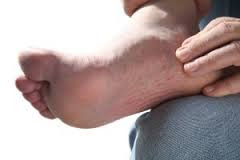Plantar fasciitis is the most common cause of heel pain.
This is due to the inflammation of the plantar fascia, a strong fibrous tissue
found underneath the foot and connects to the calcaneus or heel bone to the
metatarsals of the feet.
If you experience heel pain when you take your first steps in the morning of after standing for long periods of time, then probably plantar fasciitis is the most probable cause. Plantar fasciitis also causes arch
pain.
Heel spurs which are abnormal growths or protrusions of bone
on the bottom of the heel bone, may cause foot pain when walking or standing. Heel
spurs are commonly seen in people who suffer from plantar fasciitis, but heel
spurs do not cause plantar fasciitis. If you have high arches or flat feet,
then most probably you are suffering from heel spurs.
A fracture of the heel bone is most often caused by high
impacts to the heel, typically a fall from high ground. Pain, swelling,
bruising, limping and difficulty walking are all signs of a fractured foot.
A stone bruise is due to bruising of the fat pad of the
heel. This occurs after stepping on a pebble or a small stone or any hard
object. The heel may not change color
after the bruise. Pain reduces and disappears with rest.
Heel Pain Treatments
For Plantar fasciitis: RICE method
1.
Rest
2.
Ice
3.
Compress
4.
Elevate
For heel spurs:
1.
Custom made inserts
2.
Cut out heel pads
3.
Pain relievers
4.
Rest
5.
Surgery
For heel fractures
1.
Rest
2.
Padding or casting of the heel
3.
Pain relievers
4.
Surgery



